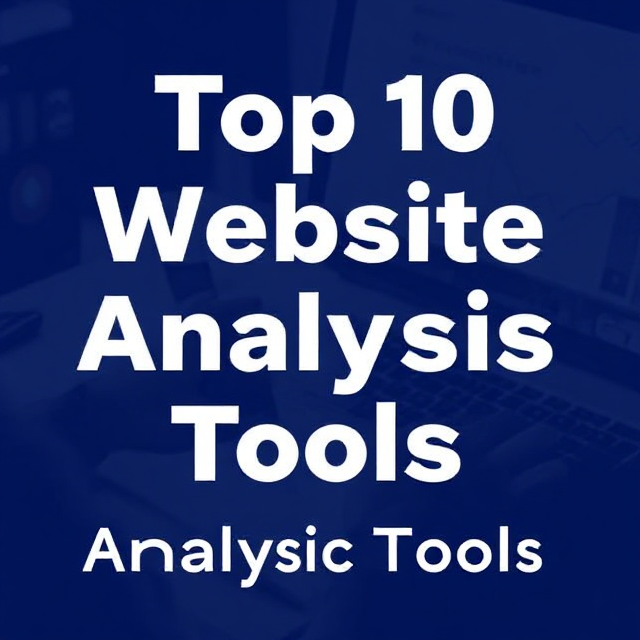Workplace Performance Boosting (WPB) technology helps improve business productivity and efficiency today. It originates from tool and system innovations used during early industrialization. It is vital in modern industries to optimize processes and increase work output.
Industries that embrace WPB technology can adapt quickly and compete effectively in evolving markets. Businesses use these tools to streamline operations and maximize employee performance every day. This article aims to comprehensively understand WPB technology and educate readers on its impact and benefits in their workplaces.
In this post we will learn in detail about What is WPB technology?
What Does WPB Stand For?
WPB stands for Workplace Performance Boosting, a crucial aspect of modern business landscapes. The acronym represents technologies enhancing productivity and efficiency within various workplace environments. Originally, WPB technology developed from innovations in industrial tools and systems.
These technologies aimed to improve industry processes during early industrialization periods. As technology advanced, WPB incorporated sophisticated office tools and systems of the 20th century. Typewriters and telephones were the first significant tools that transformed workplace tasks. Later, computers revolutionized work processes and introduced greater speed and efficiency.
Digital productivity tools, like word processors, allowed better organization and data management. The rise of the Internet expanded WPB by enabling online communication and email. Companies adopted digital tools to manage workflows and improve team collaboration. Early software solutions for performance tracking and business process automation catalyzed WPB’s evolution.
The Core Concept of WPB Technology
WPB technology revolutionizes modern businesses by improving productivity and efficiency. It uses various integrated systems tailored to specific workplace needs. These systems comprise tools and software enhancing task management, communication, and process optimization. The science behind WPB technology involves data analysis and automation principles.
By analyzing data, businesses make informed decisions through actionable insights for improved outcomes. Automation streamlines repetitive processes, freeing employees to focus on creative tasks. Industries using WPB technology include finance, manufacturing, and healthcare. WPB tools manage transactions, enhance security, and optimize client services in finance.
WPB systems are used in manufacturing to streamline production, ensure quality control, and improve efficiency. Healthcare uses WPB technology for patient management, record-keeping, and scheduling efficiency. WPB technology supports businesses with scalable and adaptable solutions for evolving challenges.
How WPB Technology Works

WPB technology applies various tools to improve productivity and efficiency in workplaces. It begins by identifying specific needs and processes that require improvement. Organizations then select suitable digital tools to address these specific needs effectively.
Step-by-step Process of WPB Technology Application
- Identify Workplace Needs: Determine which areas need productivity improvements and efficiency boosts.
- Select Appropriate Tools: Choose digital tools with features matching identified workplace needs.
- Integrate Technology Systems: Implement these tools into existing workflows and organizational systems.
- Train Employees: Provide training to ensure employees effectively use new technology tools.
- Monitor Performance: Use data-driven insights to evaluate improvements in productivity and efficiency.
- Adjust as Needed: Make necessary adjustments based on performance feedback to optimize tool usage.
Key Components or Elements Involved
- Automation Tools: Manage repetitive tasks to free up staff for strategic activities.
- Communication Platforms: Facilitate seamless interactions and teamwork among remote and in-office workers.
- Performance Management Systems: Offer real-time feedback to continuously monitor and improve employee performance.
These steps and components ensure WPB technology positively impacts organizational productivity and employee satisfaction.
Applications of WPB Technology
Manufacturing Industry:
WPB technology ensures streamlined production processes, reducing wastage and optimizing output. Smart automation tools enhance manufacturing precision, resulting in consistent quality products. Data analytics within WPB technology provides insights, facilitating effective decision-making and process improvements.
Real-time monitoring systems detect inefficiencies, allowing swift corrections to maintain high productivity. Robotics and automation free human resources for complex problem-solving and innovative tasks.
Healthcare Sector:
WPB technology assists in developing advanced medical devices, ensuring precise and reliable patient care. Automation in healthcare simplifies routine checks, allowing focus on critical patient treatments.
Digital tools streamline patient data management, enhancing accessibility and improving healthcare delivery efficiency. Innovative technology enables remote monitoring, helping healthcare providers track patient progress in a timely. Data-driven systems aid in accurately diagnosing conditions, leading to better treatment outcomes.
Telecommunications and IT:
WPB technology boosts data speed, improving telecommunications infrastructure reliability and user experience. Network optimization tools reduce communication disruptions, ensuring smooth connectivity across various platforms.
Enhanced security protocols protect data, maintaining user privacy during transmission processes. Real-time data processing technologies support seamless telecommunication services across diverse regions. Automated systems in IT increase efficiency, minimizing human errors in data handling.
Automotive and Aerospace:
WPB technology revolutionizes vehicle systems, ensuring enhanced safety and efficient performance features. Predictive analytics in the automotive industry allows proactive maintenance, preventing potential mechanical failures.
Advanced sensors assist in real-time monitoring, boosting vehicle efficiency and passenger safety. Aerospace utilizes WPB tools for optimized flight operations, increasing aircraft safety and reliability. Automation enhances production precision and manufacturing of safer, high-performance vehicles and aircraft.
Advantages and Disadvantages of WPB Technology
| Advantages | Disadvantages |
| Increased Efficiency and Productivity | Initial Setup Costs |
| WPB technology automates repetitive processes, frees up time for staff to work on more strategic and creative tasks, thus boosting overall productivity. | Implementing WPB systems can involve significant initial costs, including purchasing new software and hardware. |
| Cost-effectiveness in Operations | Employee Training Requirements |
| WPB technology automates repetitive processes, freeing up time for staff to work on more strategic and creative tasks and thus boosting overall productivity. | Employees may require comprehensive training to effectively use new technology tools, which can be both time-consuming and costly. |
| Scalability and Adaptability to Various Industries | Dependence on Technology |
| WPB systems can be adapted to fit the specific needs of different industries, allowing for tailored solutions that can grow with the business. | Over-reliance on WPB technology can pose risks if systems experience downtime or technical failures. |
How to Implement WPB Technology in Your Business
1. Assess Your Needs
Begin by pinpointing organizational areas that need improvement through automation tools.
2. Choose the Right WPB Tool
Select a WPB platform based on your firm’s size and industry-specific requirements.
3. Customize Workflows
Design workflows that perfectly align with your business processes for comprehensive automation.
4. Train Your Team
Offer training sessions so your team can effectively navigate the new technology workflows.
5. Monitor and Optimize
Regularly evaluate the system’s performance and gather user feedback for continuous improvements.
Integrating WPB Technology into Your Business: A Step-by-Step Guide
Assess Your Needs: Identify areas where automation and data insights can significantly add value.
Choose the Right Solution: Research carefully to find a WPB solution tailored perfectly to your industry needs.
Implement in Phases: Start with smaller tasks first to effectively understand technology’s impact on your operations.
Train Your Team: Provide comprehensive, hands-on training to simplify and streamline technology adoption.
Monitor and Adjust: Regularly review and refine the system’s performance for optimal operational results.
Challenges and Limitations of WPB Technology
High implementation costs initially make launching WPB technology expensive for smaller businesses. Technical complexities require expert staff to deploy and manage WPB systems properly. Employees need extensive training to use advanced WPB technology tools effectively. Older system compatibility issues can hinder seamless integration with new WPB solutions.
Constant system updates demand continuous attention to maintain WPB system efficiency and reliability. Over-reliance on technology can cause interruptions if WPB tools fail unexpectedly. Regular maintenance involves extra costs, significantly impacting the company’s overall budget. Managing these challenges requires strategic planning and long-term investment from the organization.
Future Prospects of WPB Technology

The future of WPB Technology promises significant growth and transformative advancements across industries. Emerging trends in WPB include automation and AI integration, which will streamline complex tasks with precision. These systems will predict workflow bottlenecks, enhance process efficiency, and offer valuable insights.
Low-code and no-code platforms will democratize workflow creation, fostering innovation without deep technical skills. This accessibility empowers employees, making workflow management more agile and dynamic. Data security will remain a priority, incorporating advanced protocols to protect sensitive information.
Compliance frameworks will ensure that systems meet global standards for data privacy. The potential impact on global industries will include increased productivity and cost savings. WPB Technology will drive innovation, making businesses more efficient, competitive, and resilient. Adopting these trends will be crucial for industries aiming to thrive in a digital future.
Case Studies or Real-world Examples
Automotive Industry Application
The automotive industry successfully uses WPB technology for efficient supply chain management. Automating tedious inventory tasks improves the production process and significantly reduces human error. A leading car manufacturer cut its operational costs by 20% using WPB solutions. Improved communication across departments fast-tracked decision-making, enhancing overall efficiency and productivity.
Through WPB, they optimized their assembly line operations, increasing production rates by 25%. This substantial productivity improvement led to quicker delivery times, satisfying customer demands. WPB systems helped maintain quality standards, minimizing defective products and warranty claims.
Healthcare Sector Success
A renowned hospital implemented WPB tools to streamline patient registration and data management processes. Admission times were reduced, enhancing the overall patient experience and satisfaction levels. Data-sharing capabilities sped up diagnosis and treatment planning, offering better patient outcomes. Improved workflow management significantly decreased waiting times, increasing operational efficiency across departments.
Hospital systems recorded decreased paperwork, providing medical staff more time for patient care activities. Metrics showed a 30% improvement in administration efficiency, impacting overall hospital performance positively. WPB systems provide secure data management, ensuring privacy compliance and safeguarding patient information effectively.
Retail Industry Implementation
A large retailer leveraged WPB technology to optimize their inventory and restocking processes. The company experienced fewer stockouts, maintaining steady product availability for all customers. Real-time data insights provided strategic planning advantages, enhancing market competitiveness and sales increases.
A 15% rise in sales was reported post-WPB implementation, validating its effectiveness. Retail staff productivity soared, with automation handling routine tasks and freeing their valuable time. Streamlined logistics tasks improved delivery times and customer satisfaction, cementing brand loyalty. WPB tools allowed rapid analysis and response to market trends, supporting agile business strategies.
Conclusion
WPB technology helps businesses streamline operations, boosting productivity and ensuring competitive relevance. Adopting AI, low-code, and enhanced data security, WPB grows smarter and more user-friendly. Seamless integrations with emerging technologies showcase the adaptability of WPB systems. Automation and workflow optimization become achievable with evolving WPB capabilities. Organizations gain efficient, scalable solutions fueling growth and continuous improvement. WPB proves essential in today’s digital-first business environments, driving innovation and success.
Businesses must explore WPB to shape their future development and success. Consider adopting WPB technology for operational efficiency and growth potential. Engage with WPB tools for streamlined processes and innovative possibilities.
FAQs About WPB Technology (Optional Section)
What is WPB technology?
WPB technology automates workflow processes for businesses. It increases efficiency and reduces manual tasks. This technology provides tools for better task management and collaboration. Automated processes save time and minimize errors in various operations. WPB helps businesses effectively achieve seamless workflow management.
What industries benefit the most from WPB technology?
Many industries benefit from WPB technology, including healthcare, retail, and automotive sectors. These industries improve efficiency and productivity through WPB systems. Automating tasks and processes saves time across departments. WPB technology supports diverse industries committed to enhancing workflow performance.
How expensive is WPB technology to implement?
WPB technology costs vary based on system complexity and company size. Initial investments can be significant. Costs include purchasing software and training staff. Over time, these systems boost productivity, offering long-term savings. Planning is essential for cost-effective WPB deployment.
Are there any environmental concerns associated with WPB technology?
When implemented responsibly, WPB technology has a minimal environmental impact. Automation reduces paper waste and energy use. Transitioning to digital processes supports sustainable practices. Continuous updates enhance system efficiency, further lowering environmental footprints. Eco-friendly WPB solutions benefit environmentally conscious organizations.
How does WPB technology improve data security?
WPB technology enhances data security with advanced protocols and encryption. It effectively protects sensitive information. Systems ensure compliance with global privacy standards. Robust security measures build user trust and protect data. Secure WPB environments safeguard company and customer information alike.



